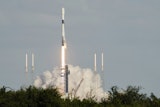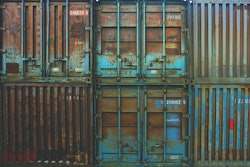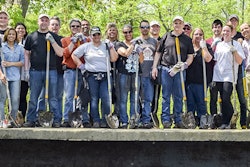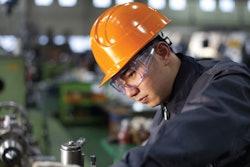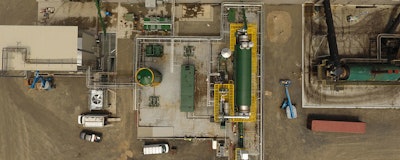
Whether it’s painting buildings, creating brand awareness, or promoting tourism to a Japanese community, it seems there isn’t a job out there that couldn’t be handled by drones.
One way unmanned aerial vehicles (UAV) can be used in the industrial and manufacturing world is with maintenance tasks. While utilizing drones could help keep workers safe, there are other considerations to keep in mind before bringing in your own UAV fleet.
IMPO spoke with Dallas VanZanten, co-founder of CloudD8ta, and Tariq Rashid, head of internal flight operations at Skyward for more details on how drones can safely be used in the industrial and manufacturing environments.
IMPO: Every day it seems there are new uses for drones reported in the media. Do you think there is real staying power for this technology to be used in the industrial/manufacturing world, or is it a tech fad that will fade?
Dallas VanZanten: I think there is a real staying power for UAVs (unmanned aerial vehicles) in the industrial sector. The industrial and manufacturing markets consider safety very important. Because of this, two things are happening. First, they are late adopters of the technology, doing their diligence to operate them safely in their environment, and watching and learning from others.
Second, there are multiple use cases where we can use UAVs in place of putting workers on the ground in hazardous or dangerous environments.
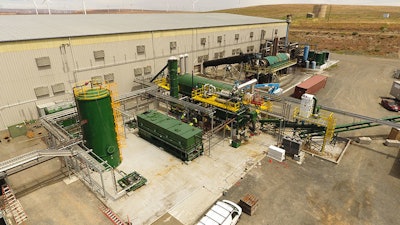
IMPO: In what ways could drones help improve worker safety in industrial and manufacturing environments?
VanZanten: Drones can help worker safety in multiple ways. For example, they can help detect gas leaks in pipelines, monitor air quality around the works, or inspect difficult areas such as flare stacks instead of putting a worker in an unsafe place.
IMPO: While the use of drones can help keep humans out of dangerous tasks, are the drones themselves at risk? What are some safety procedures facility managers should keep in mind when implementing drones for maintenance tasks?
VanZanten: The drones themselves are definitely at risk. Most industrial or manufacturing facilities have tall structures, hot pipes, chemicals, and combustible/flammable materials. To avoid putting humans or drones at risk, you want to make sure you have a flight plan that can eliminate or limit the amount of time flying over these hazards. For example, if you are hired to inspect a flare stack and there are high power lines nearby, you probably don't want to hover directly above the power lines. Find a different route to get the angle you need.
When implementing a UAV for maintenance tasks, you want to make sure you have done a JHA (Job Hazard Analysis) before each flight. You want to make sure you have chosen a UAS system with redundant safety features built in to help prevent an accident. Have a map showing “high hazard” areas of your facility and make the pilot aware of them. All this information can then be marked in the flight planning tools on Skyward’s airspace map and documented before your mission. I say always have an observer/spotter in an industrial setting even though it's not required now with Part 107.
Tariq Rashid, head of internal flight operations, Skyward: Like any other technology, drones are only as safe as the humans who operate them and the systems put in place to manage them. It’s important to remember that drones are aircraft; they are much more susceptible than say a piece of earth moving equipment to mishap caused by lack of flight discipline or environmental conditions. Adding a drone safety program means ensuring that your team has knowledge, techniques, and tools that account for the manufacturing or plant environment, and encouraging flight discipline.
In practice, here are three things you can do to build a safer program:
- Ensure that your operators meet predefined standards of knowledge and practical skill
- Use a standard method for ensuring that your equipment is in airworthy condition
- Use a standard method for maintaining operational control
These little flying robots are pretty amazing and exciting but the truth is, the ideal commercial drone operation should be utterly predictable and appear to observers to be relatively boring.
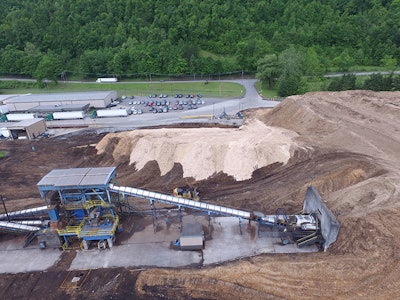
IMPO: What are some of the pros and cons of a manufacturer purchasing/operating their own drone fleet and contracting through a drone services company, such as CloudD8ta?
VanZanten: I think it's important for a manufacturer to hire someone like CloudD8ta to operate for them, or at minimum, for training and help with UAS program implementation. We offer both training and pilot services. It's important to make sure you purchase the right UAS system for your work. We often see industries buy the wrong unit for what they are trying to do, and they get frustrated.
Pros of running an in-house operation:
- You always have a UAV whenever you need it. You don't need to schedule in advance.
- You don't have to pay a contractor.
Cons of running an in-house operation:
- You won’t have the experience that a UAV contractor will have.
- You have to buy multiple UAVs that might each get little use.
- Increased liability of operating on your own UAV(s) with little experience.
- Additional expenses of purchasing software to analyze the data, and training and paying someone to pilot the UAV(s).
IMPO: Any final thoughts?
VanZanten: The following are a few examples of how we have used UAVs to help with safety in industrial settings.
- Kingsford Manufacturing. We used UAVs to measure stockpiled wood chips for Kingsford Manufacturing (BBQ). Instead of sending a survey crew to take manual shots on the pile, we can scan the pile using our UAVs and provide accurate volumes within 24 hours. They used to put survey crews in harm's way, climbing up and down the pile, with the risk of falling and with heavy equipment working around them — or shut down operations while they were surveying the pile. Using UAVs has proved to be safer and faster.
- Oil Refineries: Instead of only inspecting flare stacks when the refinery is shut down and having a maintenance worker work from a high platform, with UAVs we can inspect the flare at any time and never have to put a worker in harm's way.
